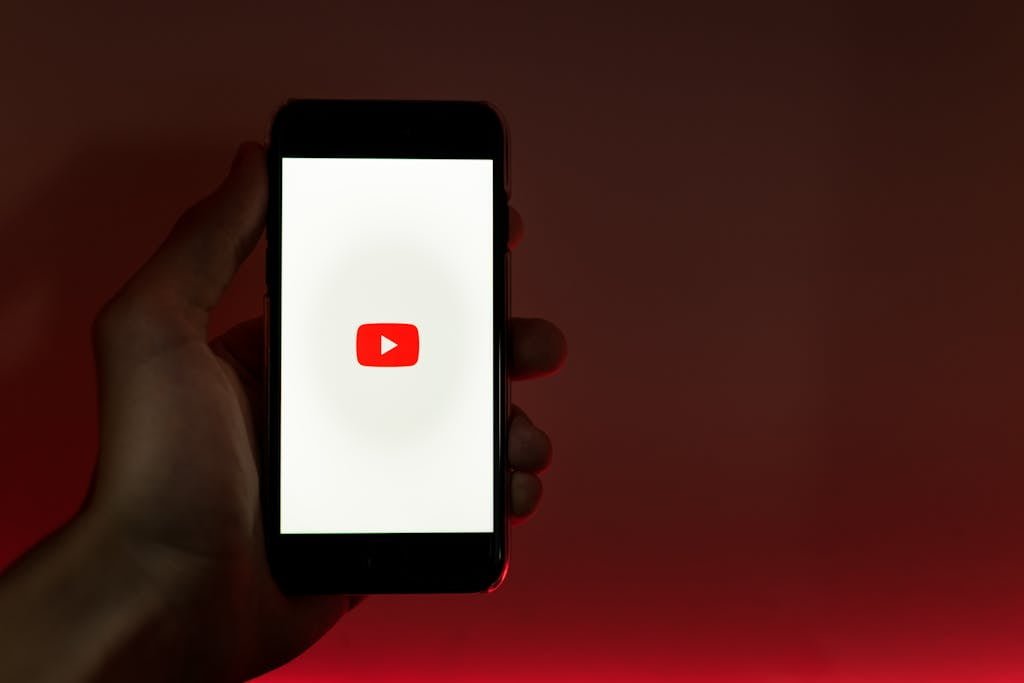Agencies need to find innovative ways to reach potential clients and stand out from the crowd. One effective method is through cold email.
Cold emailing involves reaching out to prospects who have had no prior contact with your agency.
However, simply sending out generic emails is not enough.
To truly succeed with cold emailing, agencies must employ advanced strategies that are tailored to their target audience and designed to maximize response rates.
In this article, we will explore some advanced cold email strategies specifically designed for agencies.
So, let’s dive in!
Table of Contents
Toggle1. Personalize Your Emails
One of the most crucial aspects of successful cold emailing is personalization.
Generic, mass emails are likely to be ignored or deleted.
Instead, take the time to research your prospects and tailor your emails to their specific needs and pain points.
Address them by their name, mention something specific about their business, and show that you have done your homework.
Personalization not only grabs the recipient’s attention but also demonstrates that you value their time and are genuinely interested in helping them.
2. Craft Compelling Subject Lines
The subject line is the first thing your recipients will see in their inbox, so it needs to be attention-grabbing.
Avoid generic subject lines like “Hello” or “Opportunity.”
Instead, use personalized subject lines that pique curiosity and create a sense of urgency.
For example, “Quick question for [name]” or “[Company name] x [Your company]”.
Experiment with different subject lines and track their performance to see which ones resonate best with your target audience.
3. Focus on Benefits, Not Features
When writing your cold email, resist the temptation to list all the features and services your agency offers.
Instead, focus on the benefits your prospects will receive by working with you.
How will your services solve their problems or help them achieve their goals?
Highlight the value you can provide and the results you have achieved for similar clients.
By emphasizing the benefits, you are more likely to capture the interest of your prospects and compel them to respond.
4. Include Social Proof
In the world of agencies, social proof is essential. Potential clients want to know that they are working with a reputable and trustworthy agency.
Incorporate social proof into your cold emails by mentioning any awards, certifications, or notable clients you have worked with. Testimonials from satisfied clients can also be powerful in building credibility.
By showcasing your expertise and success, you instill confidence in your prospects and increase the likelihood of a positive response.
5. Utilize Buying Signals
In the world of sales and marketing, understanding and leveraging buying signals can significantly enhance the effectiveness of your cold email campaigns.
Buying signals are actions or behaviors exhibited by prospects that indicate their interest or readiness to make a purchase.
By identifying and responding to these signals in your cold emails, you can increase your chances of converting prospects into paying clients. Here are some strategies to incorporate buying signals into your cold email approach:
Mention Recent Interactions
If a prospect has recently interacted with your agency, such as attending a webinar, downloading a resource, or engaging with your social media content, it indicates their interest in your offerings.
In your cold email, reference these recent interactions to establish a connection and remind them of their interest. For example, you can say, “I noticed that you attended our webinar on XYZ topic last week.
I wanted to follow up and provide you with additional insights that can help your agency achieve even greater results.”
Address Pain Points
When prospects express their pain points or challenges in public forums, such as social media groups or industry forums, it presents an opportunity for you to reach out with a relevant solution.
Monitor these platforms for discussions related to your agency’s services and identify prospects who are actively seeking solutions. In your cold email, acknowledge their pain points and offer insights or strategies to address them.
This demonstrates your understanding of their needs and positions your agency as a valuable resource.
Respond to Content Engagement
If a prospect has engaged with your agency’s content, such as liking, commenting, or sharing your blog posts or social media updates, it indicates their interest in your industry or niche.
In your cold email, acknowledge their engagement and offer additional valuable content or resources.
For example, you can say, “I noticed that you found our recent blog post on XYZ topic helpful. I thought you might be interested in our comprehensive guide on the same subject, which provides even more in-depth insights.”
Track Website Behavior
By utilizing website tracking tools, you can monitor the behavior of prospects who visit your agency’s website.
Pay attention to specific pages they visit, the duration of their visit, and any actions they take, such as downloading a whitepaper or requesting a demo.
Use this information to tailor your cold email messaging and offer relevant solutions based on their demonstrated interests.
For example, if a prospect spends a significant amount of time on your pricing page, you can highlight your agency’s competitive pricing and value proposition in your email.
Leverage Referrals and Recommendations
When prospects receive recommendations or referrals from trusted sources, they are more likely to be receptive to your cold email outreach.
If you have mutual connections or clients with the prospect, mention them in your email to establish credibility and build trust.
For example, you can say, “John Smith, a satisfied client of ours who I believe you know, recommended that I reach out to you. He mentioned that our agency’s expertise in XYZ area aligns perfectly with your agency’s goals.”
By incorporating these strategies into your cold email campaigns, you can effectively leverage buying signals to capture the attention and interest of your prospects.
Remember, the key is to be genuine, relevant, and provide value in every interaction.
By demonstrating that you understand their needs and can offer solutions, you increase the likelihood of converting prospects into satisfied clients.
6. Harness the Power of Social Selling
In today’s digital age, social media has become an integral part of our lives. It has also transformed the way businesses connect with their customers.
Social selling is the practice of leveraging social media platforms to build relationships, engage with prospects, and ultimately drive sales.
By incorporating social selling into your sales strategy, you can tap into a vast pool of potential customers and establish meaningful connections. Here are some tips to effectively use social selling:
Build a Strong Personal Brand
In the realm of social selling, your personal brand is crucial. It’s how you differentiate yourself from your competitors and establish credibility with your audience.
Take the time to craft a compelling and professional social media profile that highlights your expertise, achievements, and unique value proposition.
Share valuable content related to your industry, engage in conversations, and showcase your knowledge and insights.
By consistently demonstrating your expertise and providing value, you’ll attract prospects and build trust.
Identify and Connect with Prospects
Social media platforms provide a wealth of information about your target audience.
Utilize advanced search features and filters to identify prospects who fit your ideal customer profile. Look for individuals who are actively discussing topics related to your products or services.
Engage with their content by liking, commenting, and sharing. Once you’ve established a connection, send a personalized message introducing yourself and expressing your interest in connecting further.
Avoid being overly salesy and focus on building a genuine relationship.
Share Relevant and Valuable Content
Content is king in the world of social selling. Create and curate content that is relevant to your target audience’s interests and pain points.
Share blog posts, articles, videos, infographics, and other resources that provide value and insights.
Position yourself as a thought leader by sharing your own expertise and opinions.
Encourage engagement by asking questions, starting discussions, and responding to comments.
By consistently delivering valuable content, you’ll establish yourself as a trusted authority in your industry.
Engage in Conversations
Social media is all about conversations.
Take the time to actively engage with your audience by responding to comments, messages, and mentions.
Show genuine interest in their opinions, challenges, and successes.
Offer helpful advice, share relevant resources, and provide solutions to their problems.
By being responsive and attentive, you’ll foster meaningful connections and build rapport with your prospects.
Remember, social selling is about building relationships, not just making sales.
Leverage Social Listening
Social listening involves monitoring social media platforms for mentions of your brand, industry, competitors, and relevant keywords.
By listening to what your prospects are saying, you can gain valuable insights into their needs, preferences, and pain points.
Use this information to tailor your messaging and offer personalized solutions.
Engage in conversations related to your industry and provide helpful insights.
By demonstrating your understanding and expertise, you’ll attract prospects and position yourself as a trusted advisor.
Frequently Asked Questions (FAQ)
How many emails should I send in a cold email campaign?
The number of emails you send depends on your target audience and resources. However, it is generally recommended to start with a smaller, highly targeted list and gradually scale up as you refine your approach. Quality is more important than quantity when it comes to cold emailing.
Should I follow up if I don’t receive a response to my initial email?
Absolutely! Following up is crucial in cold email campaigns. Many prospects may have missed or overlooked your initial email, so a well-crafted follow-up can increase your chances of getting a response. Be persistent but not pushy, and consider using a multi-touch approach with a series of follow-up emails.
How can I track the success of my cold email campaigns?
To track the success of your cold email campaigns, you can use email tracking software or CRM tools that provide analytics and insights. These tools can help you monitor open rates, click-through rates, and response rates. By analyzing the data, you can make informed decisions and optimize your campaigns for better results.
Is it advisable to include attachments in cold emails?
It is generally not recommended to include attachments in cold emails. Attachments can trigger spam filters and decrease the deliverability of your emails. Instead, provide links to relevant resources or landing pages where recipients can access more information. This also allows you to track engagement and gather valuable data.
How can I improve my cold email response rates?
There are several strategies to improve cold email response rates. Some effective techniques include personalization, compelling subject lines, focusing on benefits, including social proof, and using clear CTAswith a sense of urgency. Additionally, make sure to follow up with prospects who haven’t responded to your initial email. By implementing these strategies, you can increase the chances of receiving a positive response and ultimately converting prospects into clients.
Conclusion
Cold emailing can be a powerful tool for agencies to generate leads and expand their client base.
However, it requires a strategic approach and advanced techniques to stand out in a crowded inbox.
Remember to track your results, analyze the data, and continuously refine your approach to improve your response rates. With these advanced cold email strategies, your agency can effectively reach and engage potential clients, ultimately driving growth and success.
Remember, success in cold emailing comes with practice and continuous improvement.
Experiment with different strategies, analyze the results, and adapt your approach accordingly.
By staying persistent and refining your techniques, you can unlock the full potential of cold emailing for your agency.
So, start implementing these advanced strategies today and watch your agency thrive in the competitive business landscape.







